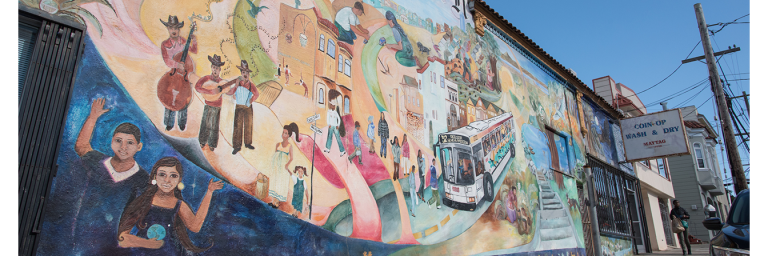Starting in the fall of 2017, the SFMTA will lead a collaborative community planning process in the Excelsior with the goal of creating safer and more comfortable neighborhood streets for people accessing schools, parks, transit, and nearby commercial corridors.
Please continue to check the project webpage for event updates! If you'd like to receive email updates about events or milestones for this project, please sign up for updates on the "Receive Updates" to the right.
- Terminado (Completed)
PROJECT DETAILS
Starting in the fall of 2017, the SFMTA will lead a collaborative community planning process in the Excelsior with the goal of creating safer and more comfortable neighborhood streets for people accessing schools, parks, transit, and nearby commercial corridors.
The SFMTA will work with the community to identify neighborhood traffic challenges, including locations with excess speeding, “cut-through” traffic, and difficult walking and biking connections to local destinations. Through this community planning process, the SFMTA will also look into opportunities for safety improvements along residential streets. The outreach process will include several interactive pop-up events and workshops. Community participation will be used to develop a set of design recommendations that achieve neighborhood traffic safety goals.
WHAT IS TRAFFIC CALMING?
Traffic calming slows traffic and creates safer and more comfortable streets. There are a variety of measures in the Traffic Calming Toolkit that can be applied together to address “cut-through” traffic, speeding and generally improve neighborhood streets for local residents and visitors.
Depending on the neighborhood, the design measure used may look and feel slightly different. Some possible traffic calming measures can include street design elements like:
- Speed humps & Raised Crosswalks
- Pavement Markings & Signage
- Visible Crosswalks and Pedestrian Islands
- Traffic Circles
- Traffic diverters (concrete elements that allow bicycles and pedestrians to pass freely but divert car traffic to other routes)
- Forced turns for vehicles or turn prohibitions for vehicles to reduce “cut-through” traffic
- Bicycle facilities
